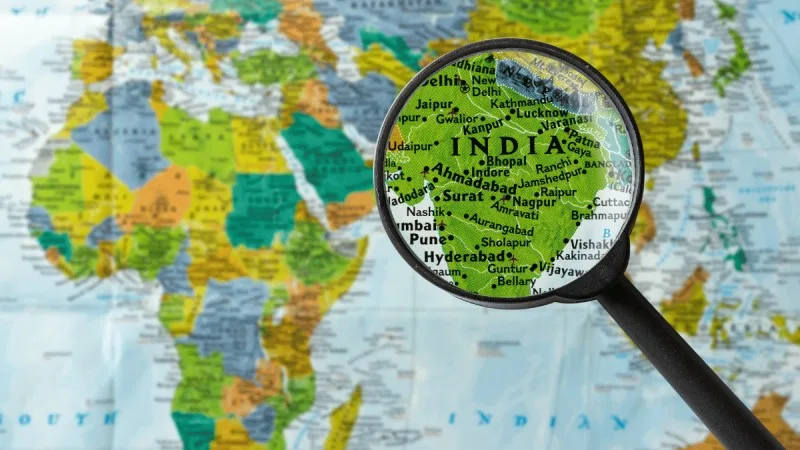Introduction Great Plains of India
The great plains of India are one of the features under the Physiographic division of India. It is a depositional plain that was formed in the Pleistocene period. It is a combination of the depositional work of Indus, Ganga, and Brahmaputra and their tributaries. River deposits are located over a depression of a valley that was formed south of Shiwalik after the completion of the formation of the Himalayan Mountain ranges. It is located between Shiwalik range in the north and Vindhyan and Meghalaya in the south. The Great Plains of India is wide in the northwest and narrow in the northeast as Meghalaya is close to the Shiwalik range.
The great plains of India are broadly classified into four categories:
BHABAR– It is a narrow zone 10-15 km wide all along south of Siwalik it is covered with boulders, pebbles, and gravels. It is deposited by rivers to a steep drop in their flow as the river enters from Siwalik to the plains, it is an infertile zone in which the flow of rivers is below boulders and pebbles.
TARAI– Tarai is located south of Bhabar it is a humid zone covered with forest. Bio decomposition of dead plant and plant materials has produced organic soil which is rich in nitrogen, phosphorous, and humus. This soil is fertile and used for the cultivation of paddy and sugarcane. It is vulnerable to flood due to rapid changes in the flow of rivers.
BANGAR– Bangar is an old alluvial plain which is old alluvial plain and is relatively high and not covered with a flood during the rainy season. Soil is settled and mature.
KHADAR- It is a flood-prone zone along rivers and streams, it is a relatively low plain covered with a flood during the rainy season. It is adversely affected by flooding and rapidly shifting river channels. Khadar/new alluvial is immature and unsettled a flood recedes new alluvial is deposited.
Regional Divisions of Great Plain of India
The Great Plain of India is a geographical unit with low elevation and gentle slope, the vast area exhibits different pluvial patterns and geomorphology. Further, it is divided into the following major divisions:
- The Rajasthan Plains
- The Punjab Haryana Plain
- The Ganga Plain
- The Brahmaputra Plain
The Rajasthan Plain- The west extremity of the Great Plain of India consists of the Thar or the Great Indian Desert which covers western Rajasthan. The desert is about 650 km long and 250-300 km wide. Out of the total area 1.75 Lakhs sq. km lies in India. About two-thirds of the Indian desert lies in Rajasthan, west of the Aravalli Range, and the remaining one-third is in the neighboring states of Haryana, Punjab, and Gujarat. The eastern part of the Thar Desert, up to the Aravalli Range is a semi-arid plain which is known as the Rajasthan Bagar.
The Punjab-Haryana Plain- This gives way to the fertile plains of Punjab and Haryana towards the east and northeast. The entire plain extends for a length of 640 km in the northwest to the southeast direction and is about 300 km wide in an east-west direction. the average elevation of the plain is about 250 m above mean sea level. The part of the plain, formed as a result of alluvial deposit by five rivers, viz., the Satluj, the Beas, the Ravi, the Chenab, and the Jhelum, is known as the Punjab plain-the land of five rivers.
The Ganga Plain- This plain stretches from Delhi to Kolkata covering an area of 3.75 sq km. The Ganga Plain is the largest plain in India. The Ganga along with its tributaries originates from Himalayan ranges viz., the Yamuna, the Gomti, the Ghaghara, the Gandhak, the Kosi, etc. have brought large quantities of alluvium from the mountains and deposited to build extensive plains.
This plan is further sub-divided into the following sub-divisions:
- The Upper Ganga Plain
- The Middle Ganga Plain
- The Lower Ganga Plain
The Brahmaputra Plain- This plain is also known as the Brahmaputra Valley or Assam Valley as most of the Brahmaputra Plain is located in Assam. Brahmaputra plain is demarcated by the Eastern Himalaya of Arunachal Pradesh in the north, Patkai and Naga Hills in the east and the Garo-Khasi-Jaintia and Mikir Hills in the south. Its western boundary is formed by the Indo-Bangladesh border as well as the boundary of the lower Ganga plain.
SIGNIFICANCE OF THE PLAIN
The Great Indian Plain has great significance. The plain is the home of about half of the Indian population because it supports people with agro-based economies in some of these areas. The entire plain except the Thar Desert, has a close network of roads and railways which has led to a large number of industrialization and urbanization. There are many religious places along the bank of sacred river like the Ganga and Yamuna which is very dear to Hinduism. In short, this vast plain is the heartthrob of India.

